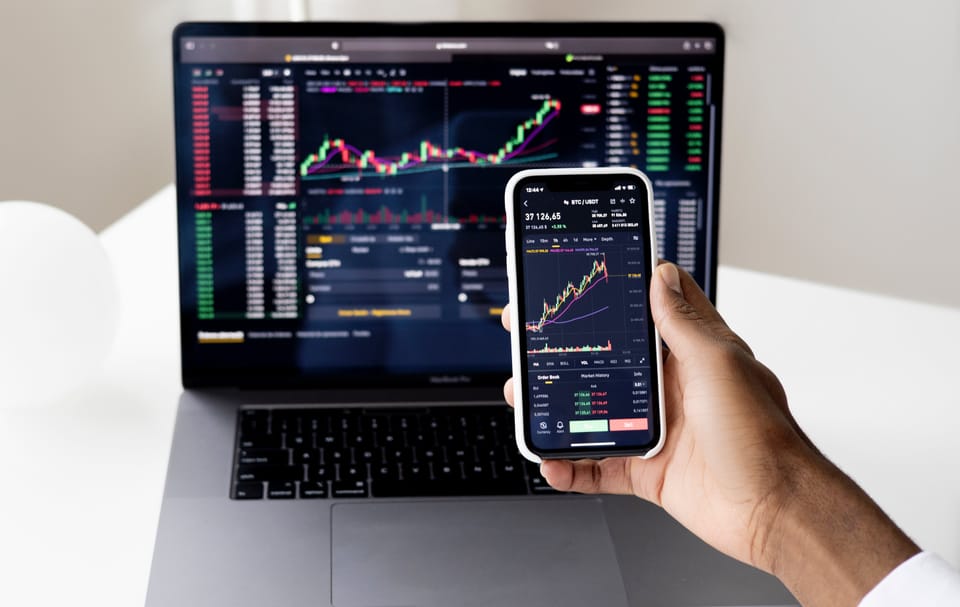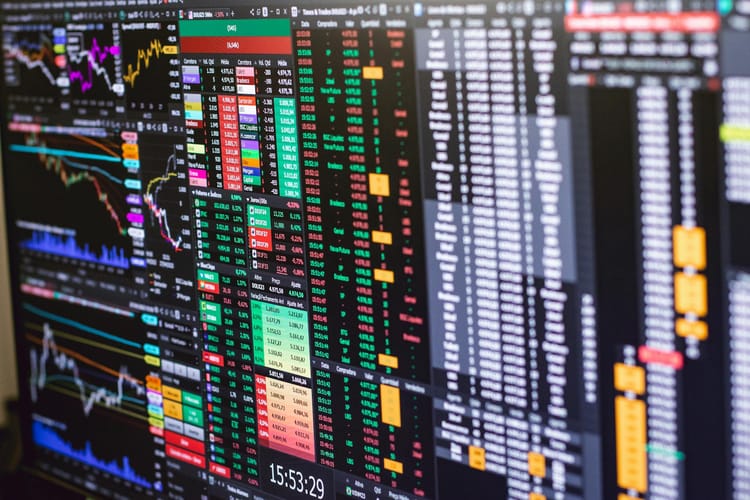How to Capitalize AI Backtesting using AfterPullback?

The Debate of Manual vs. automated Backtesting is gaining the attention of many traders now a days.
In today's financial markets, the ability to effectively backtest trading strategies is crucial for success. While traditional backtesting methods rely heavily on manual analysis and human intuition, the integration of artificial intelligence (AI) in Backtesting is revolutionizing the process. By harnessing the power of AI, traders can analyze vast datasets, optimize strategies, and make more informed decisions, ultimately increasing their chances of profitability.
So,
In the blog post below, we will analyze the backtesting process in the most simplest way possible and see how AI is improving this process.
So, Let's Start
The Process of Backtesting your trading Strategy can be bifurcated into 3 Simple Steps;
Step 1: Define Your Strategy
This is where your backtesting journey commences. The initial step involves setting clear boundaries for your trading approach. Will you be seeking opportunities as a day trader, a swing trader, or a long-term investor? This foundational decision significantly impacts subsequent strategy elements.
For instance, a day trader, focusing on intraday price fluctuations, would typically employ shorter timeframes (1-minute, 5-minute, 15-minute) and fast-moving indicators like RSI and MACD. Conversely, a long-term investor would prioritize longer timeframes (weekly, monthly) and indicators such as moving averages to identify broader market trends.
By establishing your trading horizon upfront, you lay the groundwork for a strategy aligned with your investment objectives and risk tolerance.
Lets dive a little deeper
Key Components of a Trading Strategy
To construct an Ideal Backtesting Setup, a robust trading strategy, you need to consider the following essential elements:
Technical Indicators:
These mathematical calculations based on historical price and volume data help identify potential trading opportunities.
For Example, you may want to back test a strategy based on Moving Averages which Smooth out price data to reveal underlying trends.
Or Bactesting your trading strategy may involve testing a strategy based on Relative Strength Index (RSI) Measuring the speed and change of price movements to identify overbought or oversold conditions.
Similarly, you may want to back test a strategy based on Bollinger Bands, Indicating a price volatility and potential entry/exit points.
Not only these, but there's a vast array of technical indicators available, each with its own strengths and weaknesses. And you can backtest your strategy based on this technical strategy.
Next up, You define the
Timeframes.
The timeframe determines the frequency at which you analyze market data. Common timeframes include Intraday, 1-minute, 5-minute, 15-minute, 30-minute, hourly & Daily, weekly, monthly timeframes
Next, you move to
Define Entry Signals.
These are the specific conditions that trigger a buy order. Examples include the Golden Cross When a short-term moving average crosses above a long-term moving average. Entry Signals can also be based on the Price Breakouts When the price moves above a resistance level or below a support level.
Once the Entry Signals are defined, you
Define the Exit Signals
These are the conditions that trigger a sell order. Examples include Stop-Loss Orders where you automatically sell a position if the price falls to a predetermined level.
Exit Signals also define your Take-Profit Orders. These are take profit orders where you automatically sell a position when it reaches a predetermined profit target without having to counter any emotional challenges.
This may also include Trailing Stop Orders, Adjust the stop-loss level as the price moves in your favor.
In this first Step, you also define
Position Sizing. This refers to determining the appropriate amount of capital to allocate to each trade. Effective position sizing helps manage risk and optimize returns.
Risk Management is also a crucial aspect of any trading strategy, risk management involves defining rules to protect your capital. This includes:
- Setting maximum loss limits per trade
- Diversifying your portfolio
- Using stop-loss orders
Step 2: Select an Asset and Timeframe
Once you've defined your trading strategy Parameters,the next crucial step is selecting the asset and timeframe for your backtest. This decision significantly impacts the outcome of your analysis.
Asset Selection
For Asset Selection, you have a broad universe to choose from
Your asset choice can range from traditional equities and commodities to more exotic options like cryptocurrencies and forex pairs.
But this wide range can also be a problem for you!
It can make you lose focus.
Remember the direction that we set in Step 1 above?
Use it.
Use a Targeted Approach
You might focus on specific sectors, market capitalizations, or asset classes based on your investment preferences or strategy requirements.
At this step, there is a tool to help you out there!
The Market Scanners
To streamline the process, many trading platforms, Including AfterPullback, incorporate market scanners. These tools allow you to filter assets based on predefined criteria, such as price trends, volatility, or fundamental metrics, helping you identify potential candidates for your back test.
And Irrespective of the Asset you choose,
There are certain,
Factors to consider when selecting the asset for the backtest;
· Ensure the asset class matches your strategy (e.g., stocks for equity-based strategies, currencies for forex).
· The Market Cap ( Small, medium, and Large size) and the industry sector should be according to your risk profile. For example, large-cap stocks are generally less risky than the low cap ones.
· Ensure that sufficient historical data is available for the asset for you to backtest. Avoid assets with significant data gaps or inconsistencies.
· High trading volume ensures smooth execution and minimizes slippage.
Timeframe Selection
Once the Asset has been identified, the Next step is to select the timeframe;
Again here, remember the 1st step?
The appropriate timeframe depends on your trading strategy
Short-term strategies: These typically focus on intraday price movements and benefit from high-frequency data like 1-minute or 5-minute intervals.
Swing trading This approach involves holding positions for a few days to a few weeks. Daily or 4-hour charts are commonly used.
Long-term investing: For buy-and-hold strategies, weekly or monthly charts provide a broader perspective on long-term trends.
Step 3: Run the Backtester-Bringing Your Strategy to Life
This is where the rubber meets the road.
This is the stage where your carefully crafted strategy is subjected to the scrutiny of historical market data.
The Backtesting Process
The process involves;
Data Processing: The back tester examines each data point in the historical dataset. At every point in time, the back tester applies the rules of your trading strategy.
Trade Simulation: Whenever the strategy's conditions are met (e.g., a buy signal is generated), the back tester simulates a trade. This involves calculating the entry price, position size, and potential profit or loss.
Performance Metrics: As the back tester progresses through the dataset, it continuously calculates and tracks key performance indicators (KPIs). These metrics provide a quantitative assessment of your strategy's effectiveness. Common KPIs include:
· Profit/Loss: The overall net profit or loss generated by the strategy.
· Win Rate: The percentage of winning trades.
· Maximum Drawdown: The largest peak-to-trough decline in the value of an investment.
· Sharpe Ratio: A measure of risk-adjusted return.
· Other metrics: Depending on your specific goals, you might also consider metrics like Calmar Ratio, Sortino Ratio, or drawdown periods.
Report Generation
Once the backtest is complete, a detailed report is generated. This report summarizes the strategy's performance, providing insights into its strengths, weaknesses, and potential areas for improvement.
A Detailed Example of the Backtesting Process:
Now you must have got the idea of how a backtesting process work.
To make it clearer, lets have a look at a detailed example.
In this simplified example, we will test a A Simple Moving Average Crossover Strategy and see how it works under a backtesting process;
Step 1: Define Your Strategy
In this step, we will define the following
Technical indicators: 50-day and 200-day Simple Moving Averages (SMAs).
These moving averages are commonly used to identify long-term trends. The 50-day SMA is often considered a short-term indicator, while the 200-day SMA is a longer-term indicator. The crossover of these two moving averages can signal potential trend reversals.
Timeframe: Daily
Daily data provides a balance between capturing significant price movements and reducing noise. It's suitable for long-term trend-following strategies.
Entry signal: Buy when the 50-day SMA crosses above the 200-day SMA (golden cross).
A golden cross is a classic bullish signal, suggesting a potential uptrend is starting.
Exit signal: Sell when the 50-day SMA crosses below the 200-day SMA (death cross).
A death cross is a classic bearish signal, indicating a potential downtrend is starting.
Position sizing: A fixed percentage of the account balance for each trade.
This approach provides consistent exposure to the market, but it's important to consider risk management factors.
Risk management: A stop-loss order set at a fixed percentage below the entry price.
A stop-loss order protects against significant losses if the market moves against the position.
Step 2: Select an Asset and Timeframe
Asset: S&P 500 Index (SPY)
The S&P 500 is a widely followed index representing a large portion of the U.S. stock market, providing liquidity and historical data.
Timeframe: Daily historical data for at least 10 years.
A longer historical dataset allows for more robust backtesting and helps identify how the strategy performs in different market conditions.
Step 3: Run the Backtester
Data processing: The back tester calculates the 50-day and 200-day SMAs for every day in the dataset.
Trade simulation: When the 50-day SMA crosses above the 200-day SMA, a buy order is simulated. When the 50-day SMA crosses below the 200-day SMA, a sell order is simulated.
Performance metrics: The backtester calculates the total profit/loss, win rate, maximum drawdown, Sharpe ratio, and other relevant metrics.
Report generation: A detailed report is generated, including a performance summary, equity curve, drawdown chart, and other visualizations.
Note: This is a very basic example. Real-world strategies often involve multiple indicators, complex entry/exit rules, and sophisticated risk management techniques.
In conclusion, by effectively combining traditional backtesting methodologies with the power of AI, traders can significantly enhance their strategy development and evaluation processes. From automating data analysis to optimizing parameters and simulating various market conditions, AI offers a competitive edge in today's complex financial landscape. As AI technology continues to evolve, we can expect even more sophisticated tools and techniques to emerge, empowering traders to make data-driven decisions with greater confidence.
Trade Smarter!





